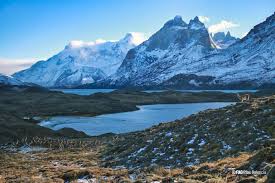South America's Mangrove Forests: A Critical Analysis of Coastal Resilience and Climate Change Mitigation
South America's extensive mangrove forests represent a crucial natural bulwark against the escalating impacts of climate change. These highly productive ecosystems, however, confront increasing anthropogenic pressures and the accelerating effects of a warming planet. A comprehensive understanding of their ecological significance and the implementation of robust, sustainable conservation strategies are paramount to the enduring well-being of South American coastal communities and global environmental stability. This analysis will define key concepts such as ecosystem services, coastal resilience, and climate change mitigation within the context of South American mangrove ecosystems, exploring their interconnectedness and implications for policy and practice.
Ecosystem Services Provided by Mangrove Forests: A Foundation for Coastal Resilience
Mangrove ecosystems provide a suite of invaluable ecosystem services. Their intricate root systems function as natural coastal defenses, mitigating wave energy and reducing erosion through sediment stabilization (Costanza et al., 1997). This inherent coastal protection safeguards critical infrastructure and human settlements. Furthermore, mangroves support exceptional biodiversity, serving as essential nurseries, breeding grounds, and habitats for diverse marine and terrestrial species (Alongi, 2014). This biodiversity underpins economically significant fisheries and contributes to the overall health of coastal regions. Crucially, mangroves act as significant carbon sinks, sequestering substantial atmospheric carbon dioxide, thereby contributing significantly to global carbon cycling and climate change mitigation (Donato et al., 2011). Applying the concept of ecosystem services valuation, we can appreciate the economic and ecological worth of mangrove conservation, far exceeding the short-term gains from their exploitation.
Climate Change Impacts and the Vulnerability of Mangrove Ecosystems: An Interconnected Threat
The intensifying impacts of climate change pose a severe threat to both South American coastal communities and the integrity of their mangrove ecosystems. Rising sea levels are causing inundation of low-lying coastal areas, while increased storm intensity and frequency lead to heightened coastal erosion and flooding. These extreme weather events, amplified by climate change, endanger lives, livelihoods, and critical infrastructure. Applying the vulnerability framework, we see that the combined effects of climate change and anthropogenic stressors—including deforestation, pollution from agricultural runoff and industrial discharge, and unsustainable coastal development—exacerbate the vulnerability of mangrove ecosystems and the communities that depend on them. The cascading effects of these factors severely strain the capacity of these ecosystems to provide their invaluable services, creating a vicious cycle of environmental degradation and social vulnerability.
Strategies for Sustainable Mangrove Conservation: A Multifaceted Approach
Effective mangrove conservation is intrinsically linked to the economic and social well-being of South American coastal communities. A collaborative, multi-stakeholder approach involving governments, local communities, and international organizations is imperative. This requires the adoption of robust policies and regulations to control coastal development, prohibit unsustainable resource extraction, and mitigate pollution, aligning with principles of integrated coastal zone management (ICZM). Implementing sustainable fishing practices is crucial for ensuring the long-term health of both the mangrove ecosystems and dependent communities. Community-based conservation programs, grounded in principles of social equity and participatory decision-making, are critical. Empowering local communities by fostering a sense of ownership and responsibility enhances the effectiveness of conservation efforts and promotes long-term sustainability. The application of adaptive management principles ensures the flexibility to adjust strategies in response to changing environmental conditions and community needs.
Case Studies in Successful Mangrove Conservation: Demonstrating the Potential for Positive Change
Successful mangrove restoration and conservation projects across South America showcase the transformative potential of collaborative action. Initiatives in Brazil's Baixada Maranhense, combining ecological restoration with community-based sustainable tourism and improved fisheries management, exemplify the potential for economic benefits stemming from ecosystem conservation. Similarly, conservation efforts in Colombia's Gulf of Morrosquillo have demonstrated tangible success in coastal protection, water quality improvement, and increased tourism revenue. These case studies underscore the efficacy of integrated approaches that synergistically combine ecological restoration with socioeconomic development. Analyzing these successes highlights the feasibility of achieving win-win outcomes, where both environmental integrity and human well-being are enhanced.
Conclusions and Recommendations: A Call for Enhanced Coastal Resilience
The protection and restoration of South America's mangrove ecosystems are not merely environmental concerns; they are foundational to building resilient coastal communities capable of navigating the escalating impacts of climate change. This necessitates a comprehensive approach that integrates scientific understanding, effective governance, and community participation. Recommendations include strengthening environmental regulations, investing in community-based conservation projects, promoting sustainable livelihoods, and integrating mangrove conservation into broader climate change adaptation and mitigation strategies. Further research is needed to refine models for predicting future mangrove vulnerability, to evaluate the efficacy of various conservation interventions, and to develop culturally sensitive and economically viable approaches to mangrove management. The success of future efforts will hinge on collaborative partnerships across sectors and nations, highlighting the importance of transboundary cooperation and knowledge sharing. A continued focus on interdisciplinary research, community engagement, and effective policy implementation is crucial for achieving sustainable outcomes and building resilient coastal communities in South America.
Reader Pool: Considering the interconnectedness of climate change, mangrove ecosystem health, and coastal community resilience, what innovative policy mechanisms could effectively incentivize large-scale mangrove conservation and restoration efforts in South America?





